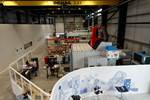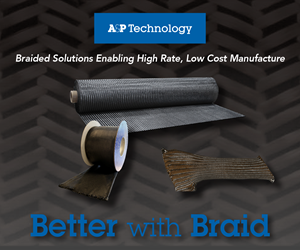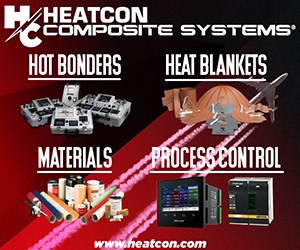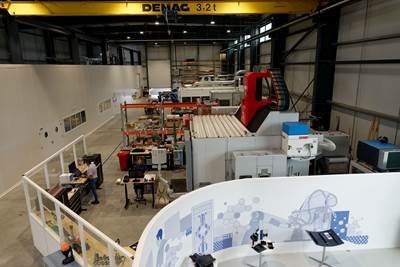Do we need a new definition for SMC?
Side story to SMC: Old dog, more tricks.
Share
Read Next
Recent changes in and variations on sheet molding compound (SMC) formulations have taken it some distance from its historical beginnings and conventional recipes. Do we then need a new definition for this product? Or will the old one still work with minor modifications? Nomenclature can be a tricky thing in industries where product and process complexity guarantees the use of abbreviations — something certainly true in both the automotive and plastics/composites markets. Add to that the creative marketing of those who wish to uniquely brand their companies’ newest material or process variant, and the industry’s communications are soon awash in interesting terminology that might or might not be meaningful, consistently applied or correctly understood.
Toward a consistent definition, Dr. Klaus Gleich, senior research associate – corporate R&D, Johns Manville (Denver, CO, US), points out, “If you go back to the origins of the term ‘prepreg,’ then all these materials are prepregs. Any preimpregnated fiber-reinforced, semi-finished material is a prepreg. If you take a composite pipe and overmold it, then the pipe is a prepreg. Even GMT [glass-mat thermoplastic composite] is a prepreg.” He adds that practically speaking, and regardless of the type of resin and reinforcement used, the biggest difference between SMC and “true” prepreg is that prepreg is typically stored in a freezer, but SMC is stored and used at ambient temperature.
Steven Hardebeck, technology director North America – composites and John Ilkka, business development manager – advanced materials at Polynt-Reichhold (Durham, NC, US ), however, both contend that products that contain continuous reinforcement (unidirectional or weaves, glass or carbon fiber) are not SMC. “Regardless of the process you use to make it, if it’s continuous fiber, it’s not SMC,” argues Hardebeck. Ilkka adds, “I believe the SAMPE [Society for the Advancement of Materials & Process Engineering] guys would probably agree with us.”
“I don’t know who should take responsibility for this in our industry, but I think there would be great value in coming together around a common language,” comments Terrence O’Donovan, VP – marketing and sales, Core Molding Technologies (Columbus, OH, US) and current chair of the Automotive Composites Alliance (ACA) of theAmerican Composites Manufacturers Assn. (ACMA, Arlington, VA, US). “As an industry, composites is still immature and evolving, it’s still more experimental and novel than commercial and uniform. That’s both good and bad,” he adds.
O’Donovan, who spent the first 20 years of his career in the steel industry, has a unique perspective on the topic. “In the early days, we faced the same thing in the steel industry,” he recalls. “Everyone had their own chemistry, their own unique mix of steels, and they were out promoting them as something unique and different.” Eventually, the industry came together around the need for standardization through the American Iron & Steel Institute (Washington, DC, US). “We definitely don’t want to take away the tailorability of fiber, resin and processing,” he notes, “but if we want to be accepted and we want our customers to have confidence we’re all talking about the same thing, we’re going to have to come together as an industry.”
Related Content
Mar-Bal expands SMC expertise through AltraSet materials division
The BMC company aims to fill the SMC market gap for those seeking optimal, low-volume demand with custom formulation and high material value.
Read MoreDieffenbacher acquires Schmidt & Heinzmann composites business
The acquisition, which includes all intangible assets of the business unit, will expand Dieffenbacher’s SMC delivery spectrum, enable potential for portfolio growth and synergies.
Read MoreIDI Composites opens new global headquarters, manufacturing and technology center
The Noblesville, Indiana, facility includes SMC and BMC manufacturing, an R&D center and the company’s corporate headquarters.
Read MoreComposite resins price change report
CW’s running summary of resin price change announcements from major material suppliers that serve the composites manufacturing industry.
Read MoreRead Next
Plant tour: Daher Shap’in TechCenter and composites production plant, Saint-Aignan-de-Grandlieu, France
Co-located R&D and production advance OOA thermosets, thermoplastics, welding, recycling and digital technologies for faster processing and certification of lighter, more sustainable composites.
Read MoreDeveloping bonded composite repair for ships, offshore units
Bureau Veritas and industry partners issue guidelines and pave the way for certification via StrengthBond Offshore project.
Read MoreAll-recycled, needle-punched nonwoven CFRP slashes carbon footprint of Formula 2 seat
Dallara and Tenowo collaborate to produce a race-ready Formula 2 seat using recycled carbon fiber, reducing CO2 emissions by 97.5% compared to virgin materials.
Read More
.jpg;width=70;height=70;mode=crop)
























